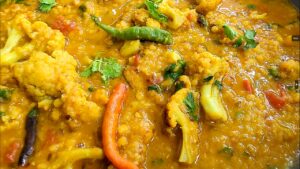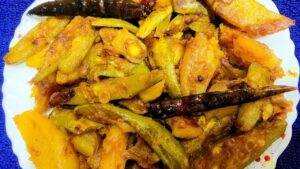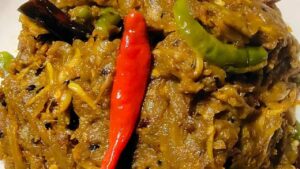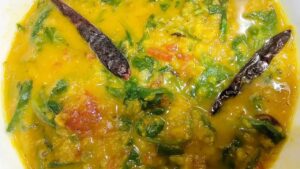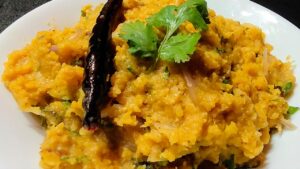Doi Potol is a traditional Bengali dish made with pointed gourds (potol) cooked in a creamy curd-based gravy.
The dish gets its name from the two main ingredients: “doi,” which means curd, and “potol.”
To prepare Dahi Parwal, the pointed gourds are cooked in a flavorful gravy is prepared using spices like cumin, ginger, garlic, turmeric, and red chili powder and curd.
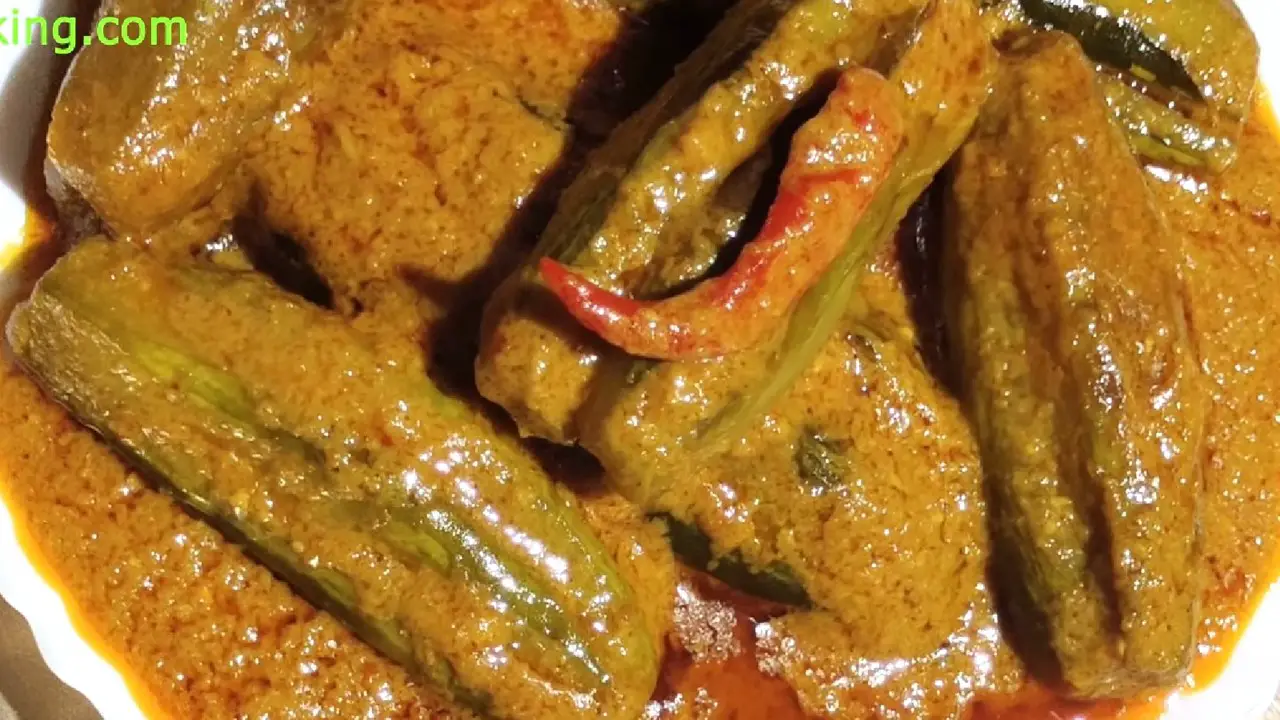
Key Takeaways:
- Doi Potol (Pointed Gourd in Curd Gravy) is a delicious vegetarian dish that pairs well with paratha, roti, naan, and jeera rice.
- The recipe involves peeling, washing, and marinating the pointed gourds with turmeric and salt.
- Sautéing and stir frying the spices, along with simmering the gravy, contribute to the perfection of the dish.
- Allow time for the spices to meld into the dish by letting it rest before serving.
- Always garnish the dish with fresh cilantro.
The Ingredients:
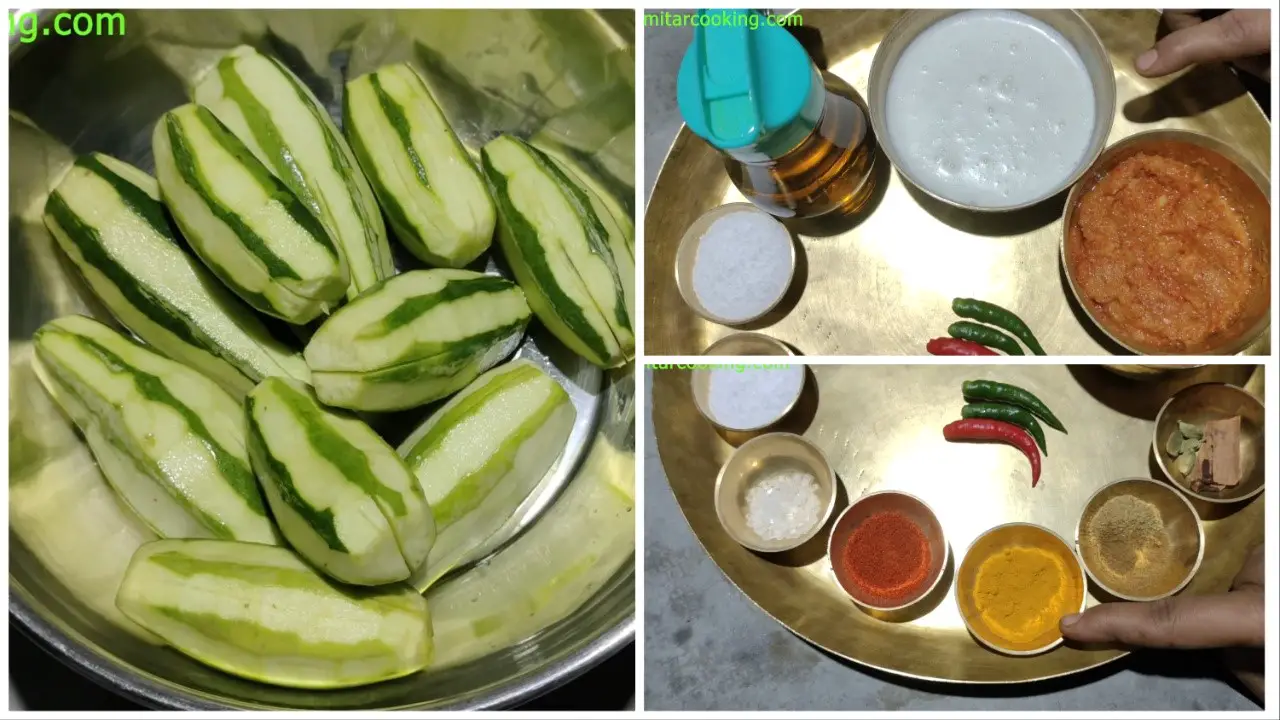
- Pointed Gourd: 500 gms (washed the pointed gourds properly, cut off both ends, peel them in strips)
- Curd: 3 tbl spoons
- Cashew Nuts: 12
- Onion-Ginger-Garlic Paste: Prepared with 1 Large-Sized Onion, ½ inch ginger and 5-6 Garlic Cloves
- 1tbl spoon Coriander-Cumin Powder (½ tbl spoon Each of Coriander Powder and Cumin Powder)
- Green Chillies: 3
- Turmeric Powder: 1 tbl spoon
- Red Chilli Powder: 1 tbl spoon
- Sugar: ½ tbl spoon
- Mustard Oil 3 tbl spoons
- Whole Spices: Cinnamon Sticks: 2, Cardamom: 4, Cloves: 2
- Salt to Taste
How to Cook Doi Potol (Step by Step Images)?
1. Mix the pointed gourds with salt and turmeric powder. Keep aside for 10 minutes.
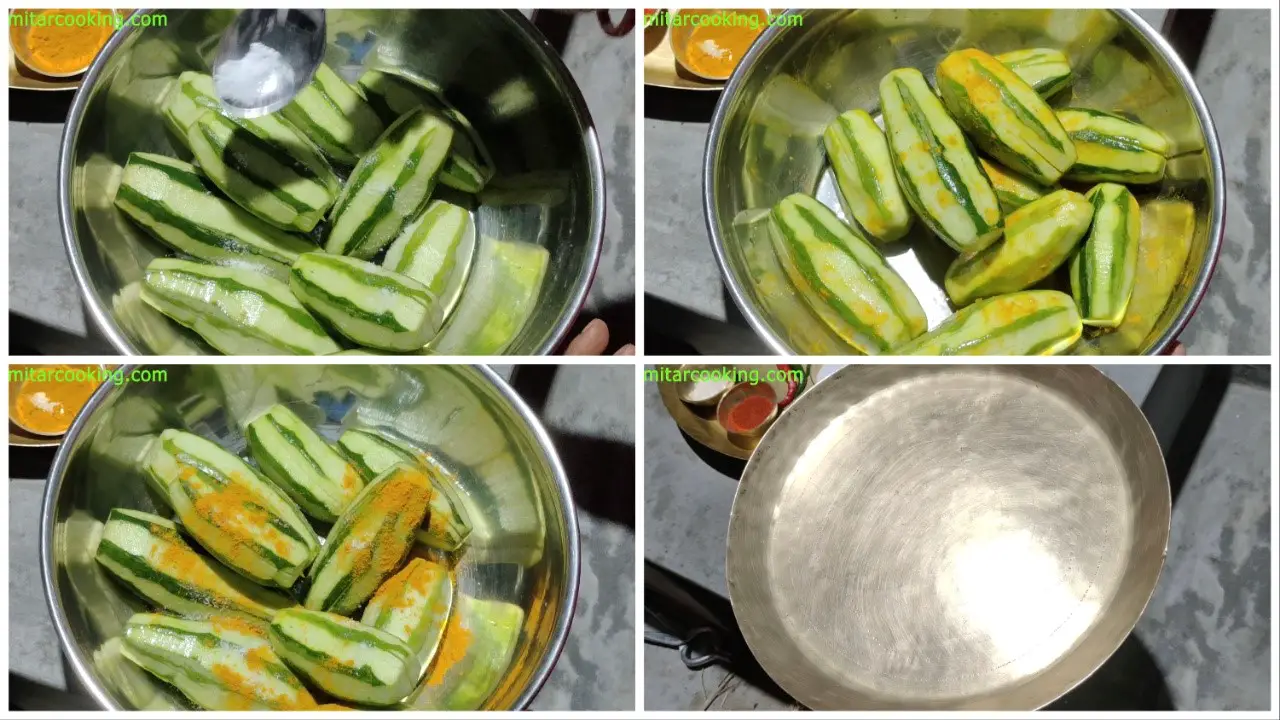
2. Fire up the chullah (clay stove) but you can cook it on a gas stove as well.

3. Place a kadai on the clay stove.
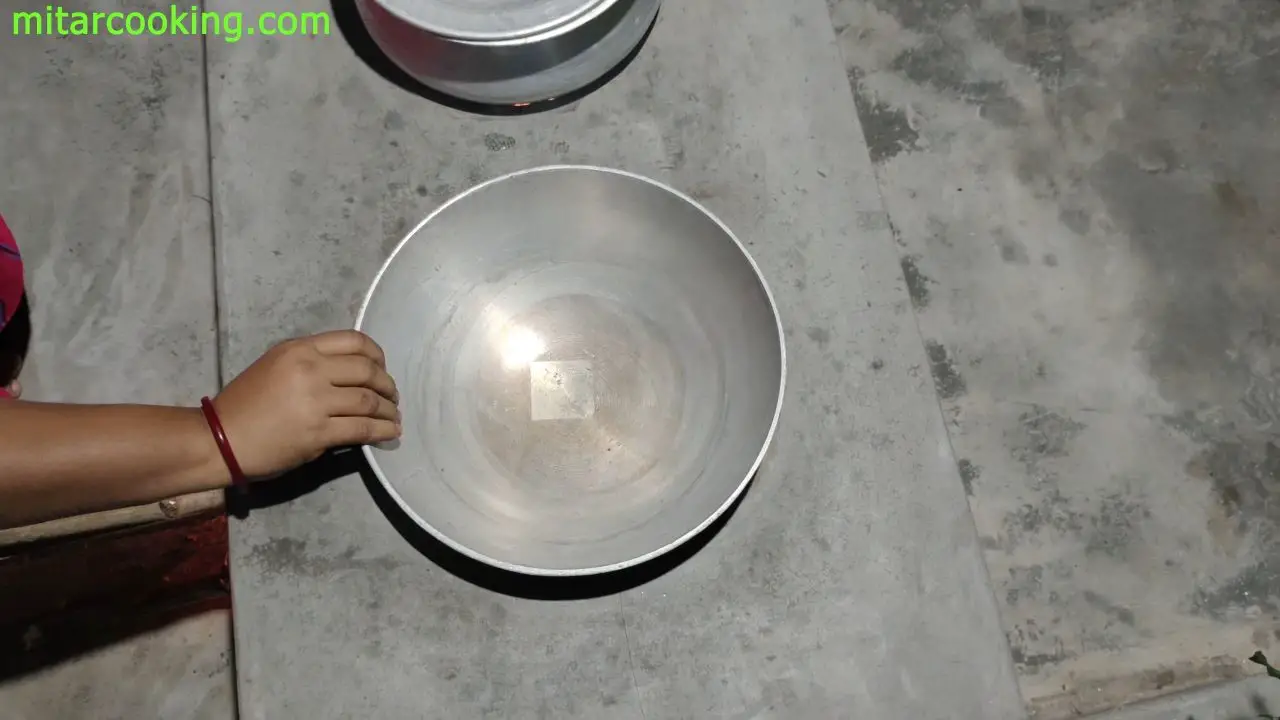
4. Pour oil into the wok (kadai). Fry the pointed gourds from all sides until they turn golden brown. Take them out on a plate.
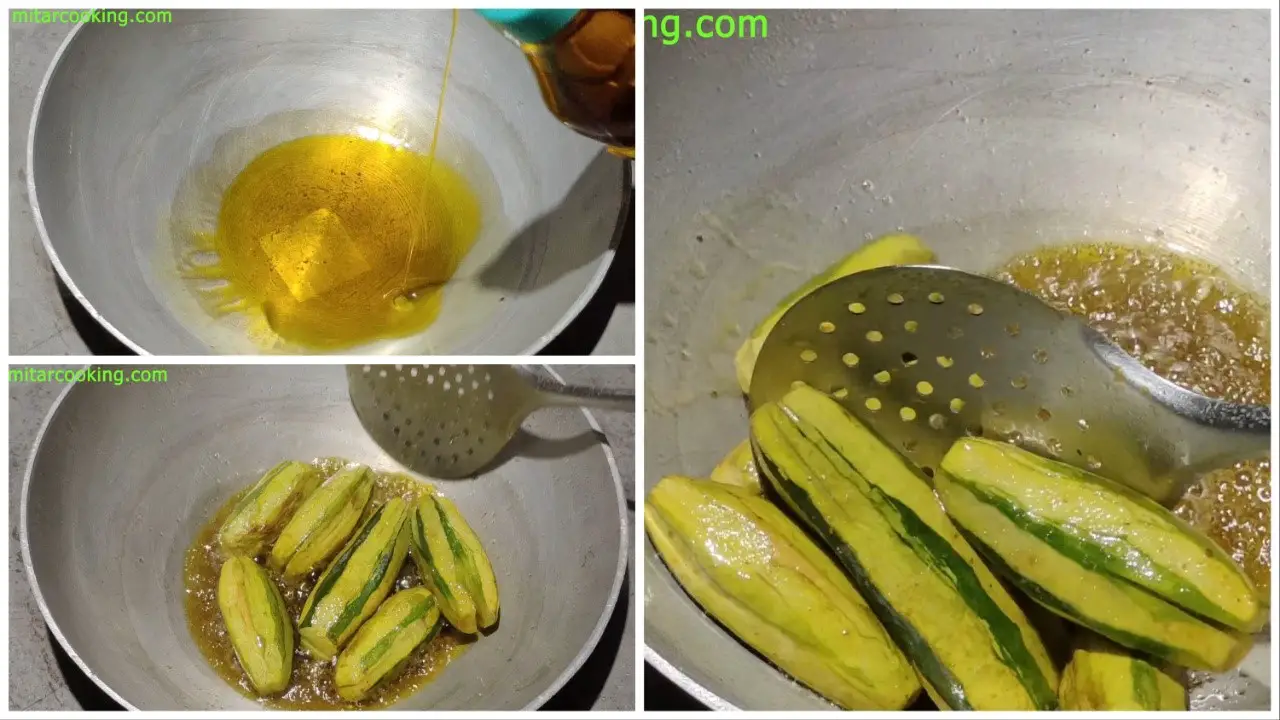
5. Add cinnamon sticks, cardamom, and cloves to the oil. Stir them until they release their flavors.
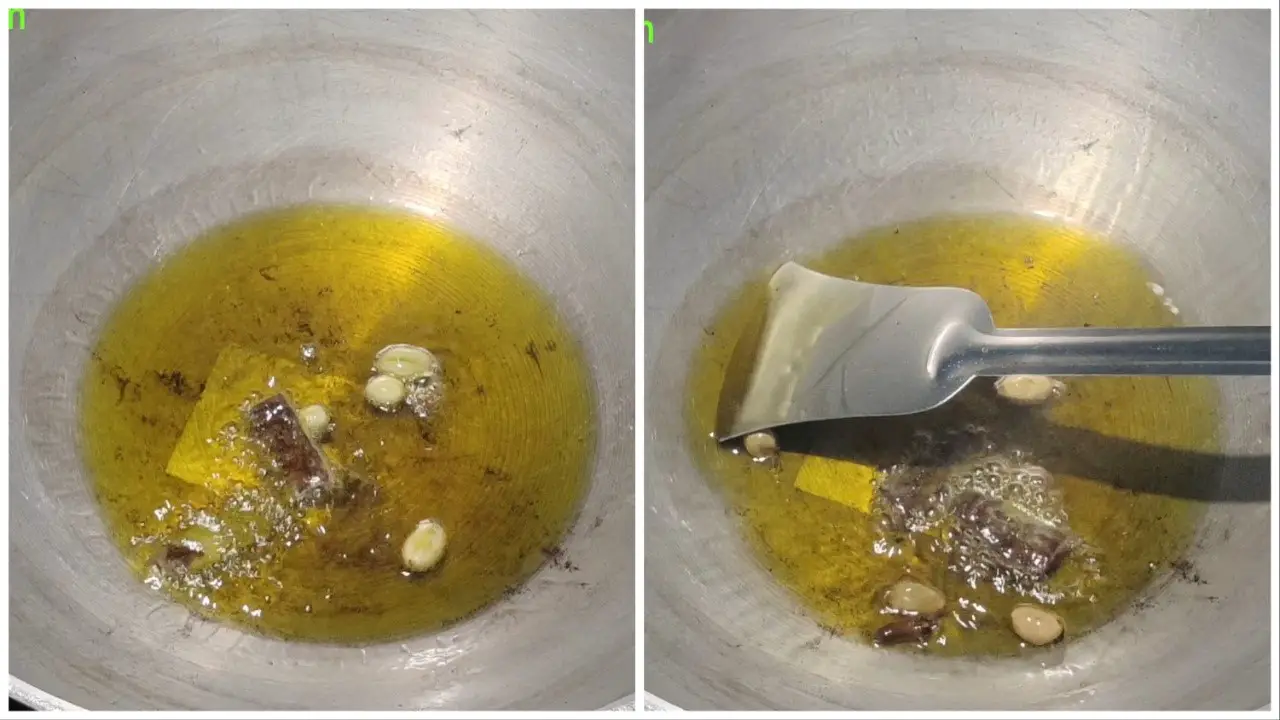
6. Add onion-ginger-garlic paste and sauté it well.
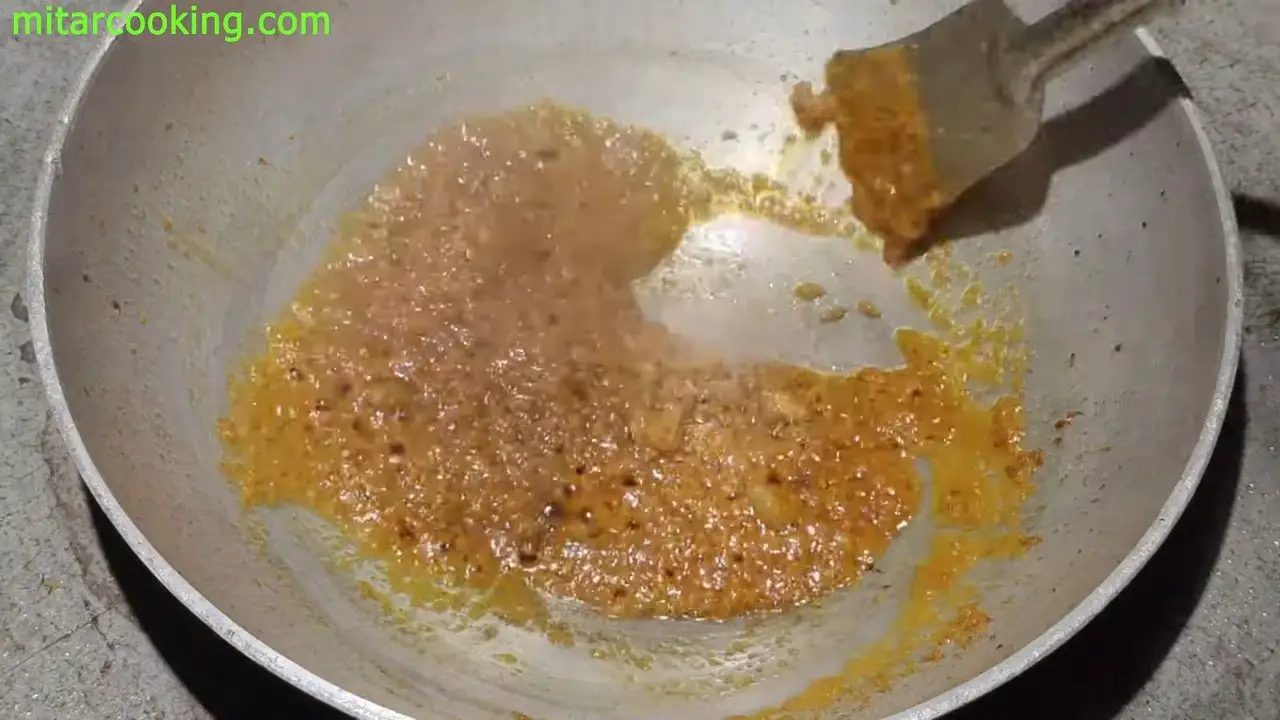
7. Add turmeric powder, red chili powder, coriander powder, and cumin powder. Stir well.
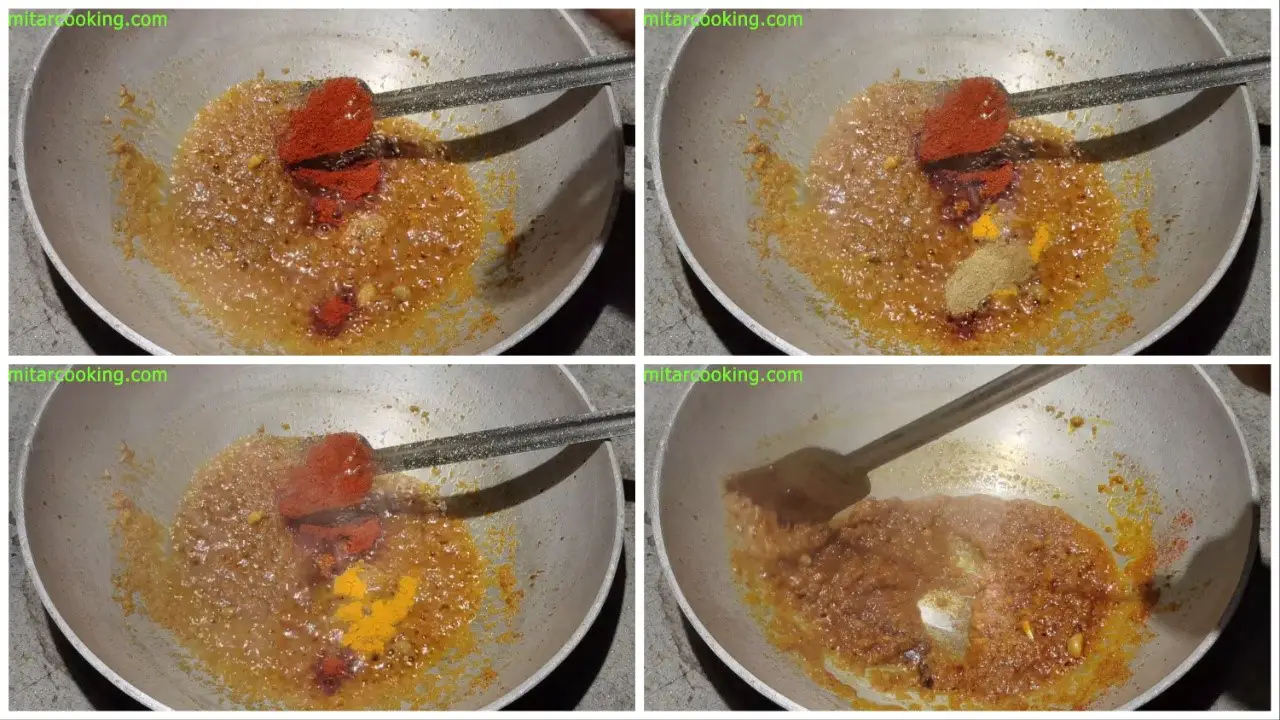
8. Add a little bit of water to make a thick paste.
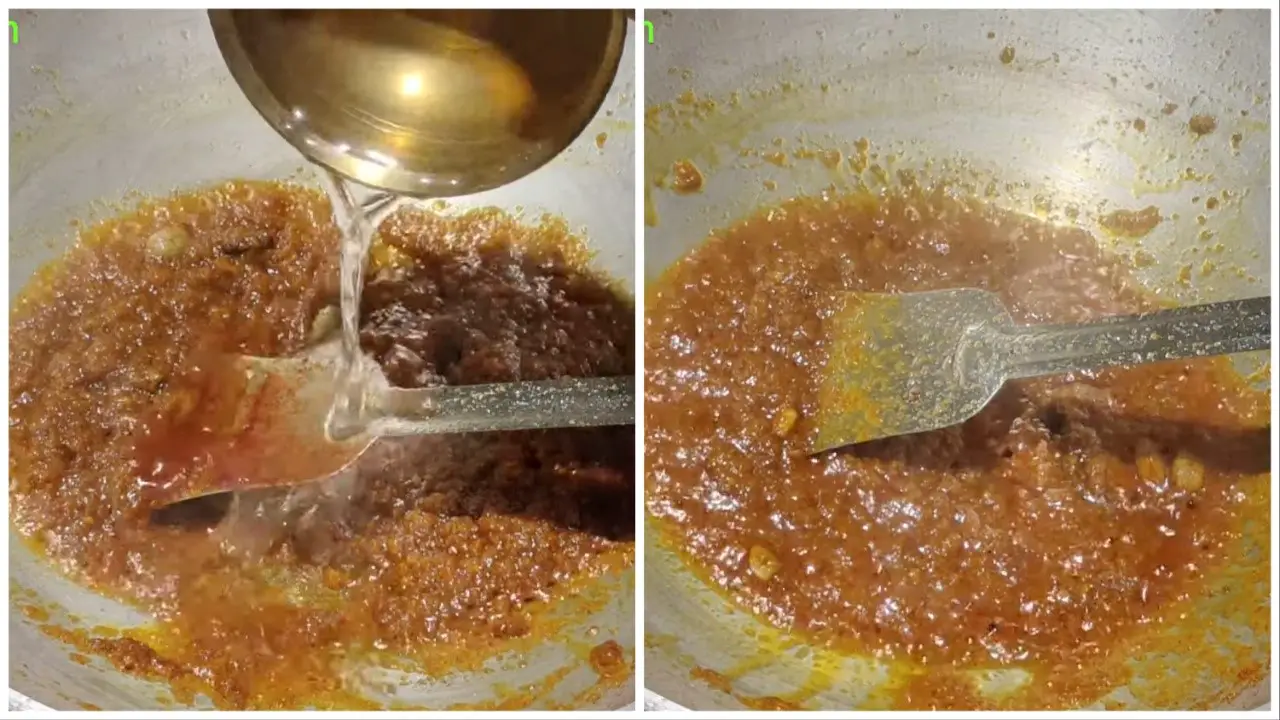
9. Add ½ tsp of salt and continue stirring. Add water if required. After the spices release oil, add the fried pointed gourds to the paste. Mix well for 5 minutes.
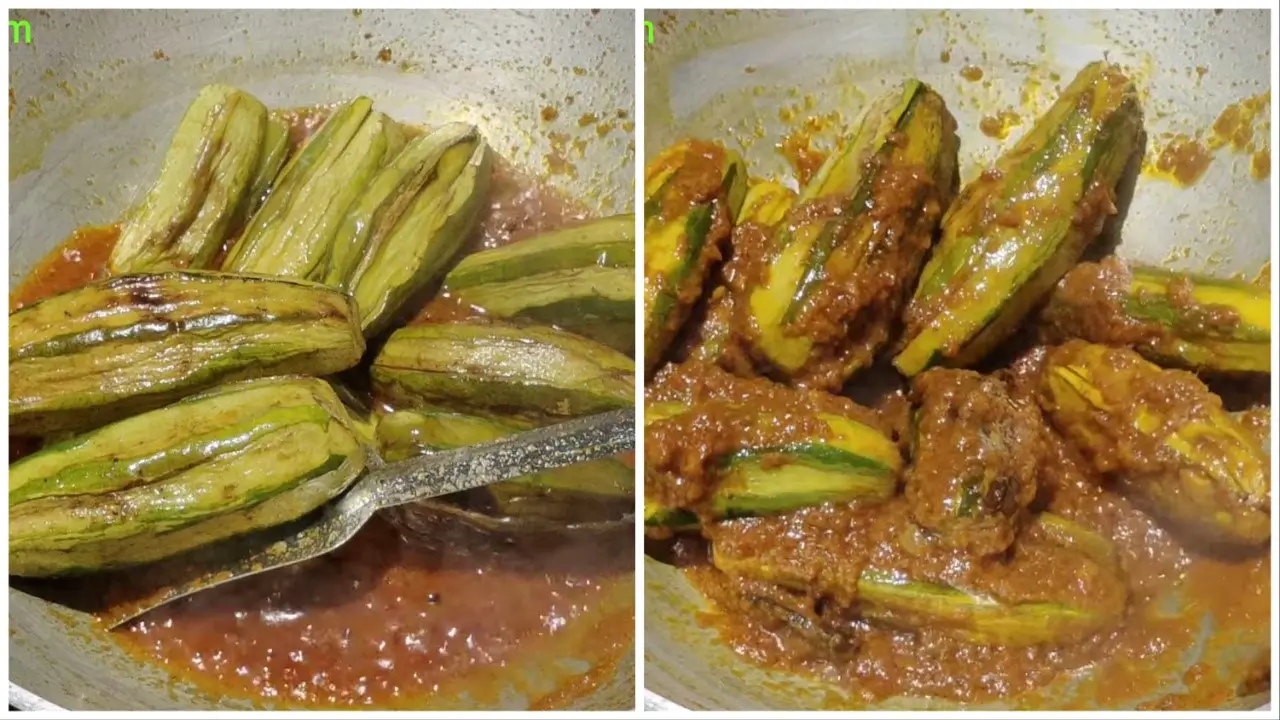
10. Add enough water to according to your grave requirement and curd-cashew paste and stir well. Add green chillies, salt to taste, and sugar.
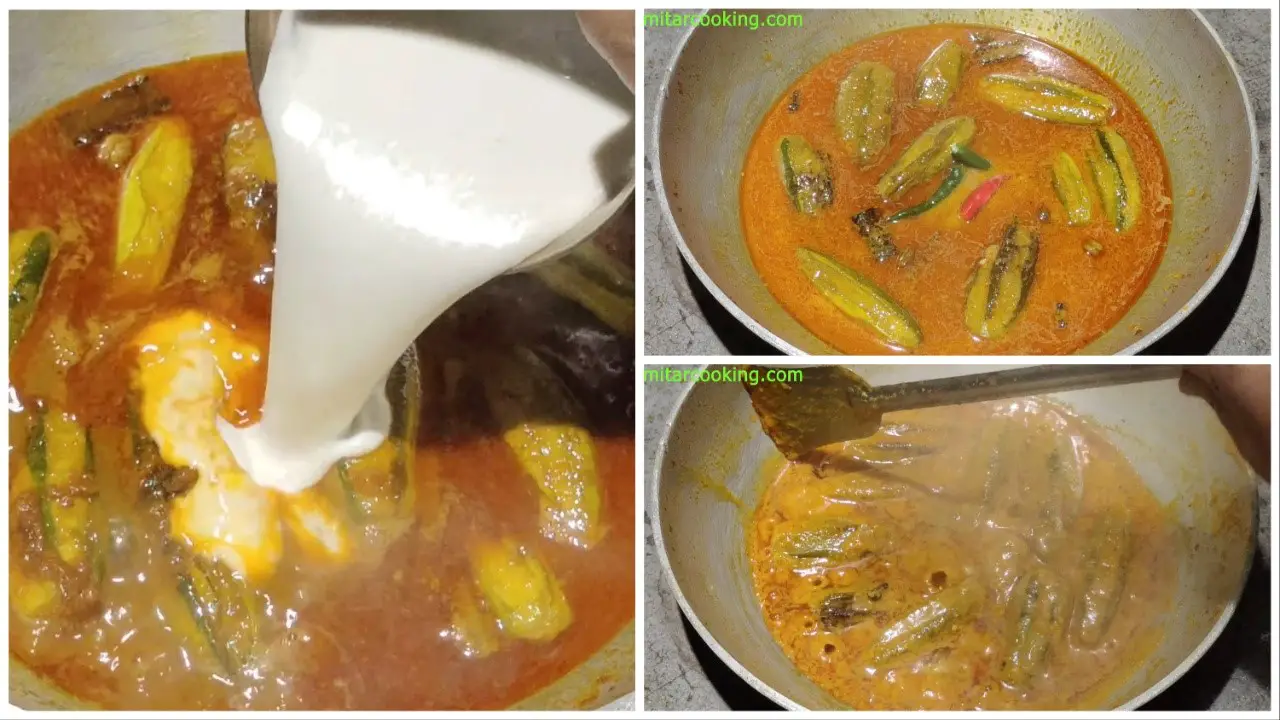
11. After 5 minutes Doi Potol is ready and pour it into a bowl. Serve it with steamed rice, jeera rice, pulao. You can also pair the dish with Indian bread like roti or paratha or deep-fried puffed bread called Luchi.
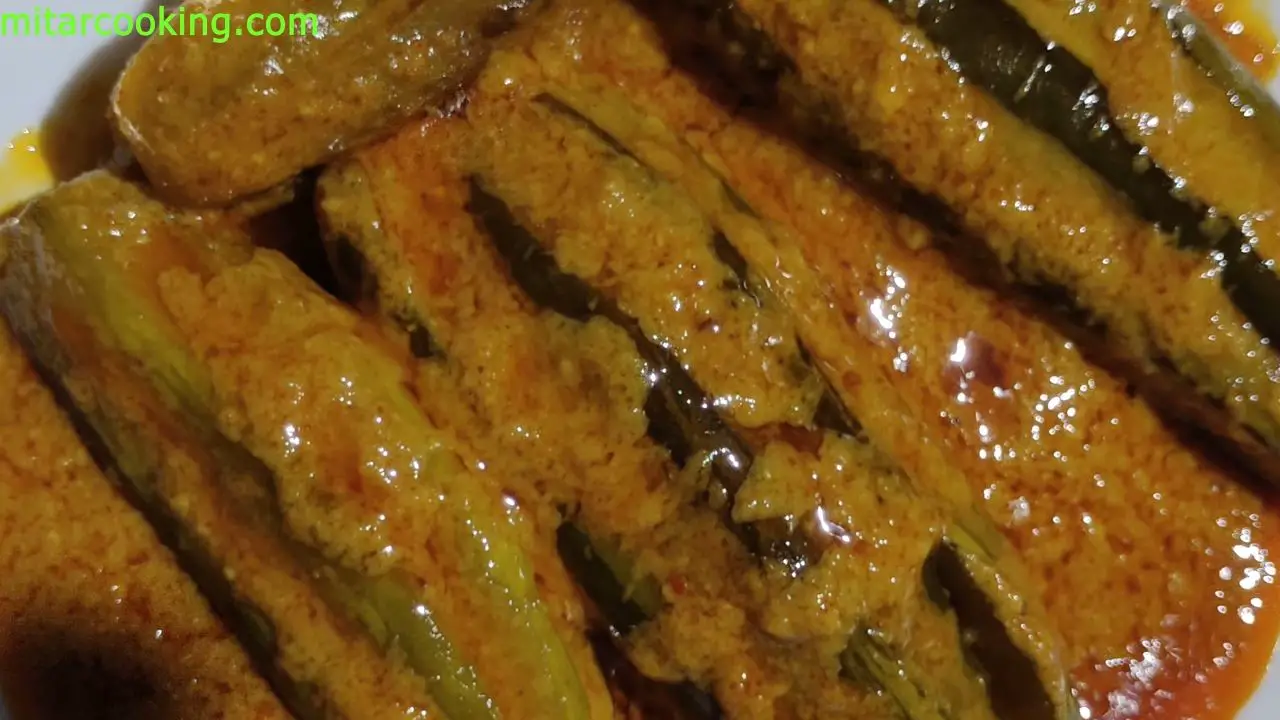
Recipe Card
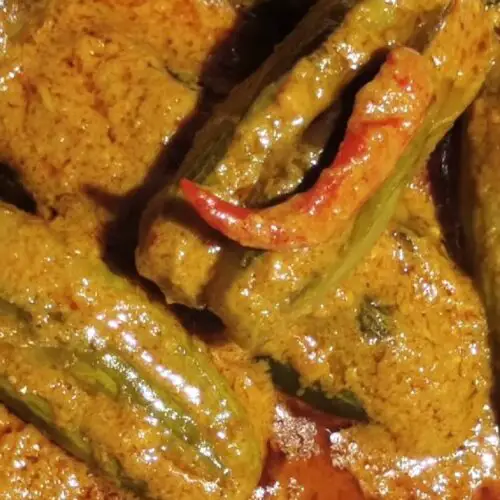
Doi Potol (Dahi Parwal)
Ingredients
- 500 grams Pointed Gourd (cleaned properly, cut off both ends, peel them in strips)
- 3 tablespoons Curd
- 12 pieces Cashew Nuts
- 1 Piece Large-Sized Onion (pasted)
- ½ inch Ginger (pasted)
- 6 pieces Garlic Cloves (pasted)
- ½ tablespoon Coriander Powder
- ½ tablespoon Cumin Powder
- 3 pieces Green Chilies
- 1 tablespoon Turmeric Powder
- 1 tablespoon Red Chili Powder
- ½ tablespoon Sugar
- 2 pieces Cinnamon Sticks
- 4 pieces Cardamom
- 4 pieces Cloves
- 3 tablespoons Mustard Oil
- Salt to Taste
Instructions
- Mix the pointed gourds with salt and turmeric powder. Keep aside for 10 minutes.
- Fire up the chullah (clay stove) but you can cook it on a gas stove as well.
- Place a kadai on the clay stove.
- Pour oil into the wok (kadai). Fry the pointed gourds from all sides until they turn golden brown. Take them out on a plate.
- Add cinnamon sticks, cardamom, and cloves to the oil. Stir them until they release their flavors.
- Add onion-ginger-garlic paste and sauté it well.
- Add turmeric powder, red chili powder, coriander powder, and cumin powder. Stir well.
- Add a little bit of water to make a thick paste.
- Add ½ tsp of salt and continue stirring. Add water if required. After the spices release oil, add the fried pointed gourds to the paste. Mix well for 5 minutes.
- Add enough water to according to your grave requirement and curd-cashew paste and stir well. Add green chillies, salt to taste, and sugar.
- After 5 minutes Doi Potol is ready and pour it into a bowl. Serve it with steamed rice, jeera rice, pulao. You can also pair the dish with Indian bread like roti or paratha or deep-fried puffed bread called Luchi.
Video
Notes
- Always pick fresh and firm pointed gourds. Pick the tender ones or those that have a tough skin or too mature. Slit them lengthwise to allow the flavors to go into them while cooking. Make sure that the cuts or slits are evenly made.
- To achieve the right texture and a nice crunchiness to the dish and enhance its taste, make sure you shallow-fry the pointed gourds till they turn golden brown in color and crispy on the outside. Make sure that you do not overcook them.
- The curd plays an important role in the taste and texture of the dish. So, make sure you use fresh, creamy, and thick curd, preferably Greek curd, to make Doi Potol. This will render the right consistency. If the curd is too watery, it will result in a thin gravy. It is best to strain the curd using a muslin cloth.
- To have the best results use whole spices, instead of the powdered variants of them, and temper them nicely in hot oil. This will add to the aroma of the dish and elevate its taste. You may alter the amount according to your preferred spice level.
- I don't cook the dish on high heat. Let it simmer on low to medium heat. However, make sure you don not cook the dish for a long time since the pointed gourd is already fried and the curd gets cooked very quickly. Just make sure the flavor is perfectly infused for rendering a balanced and rich taste.


